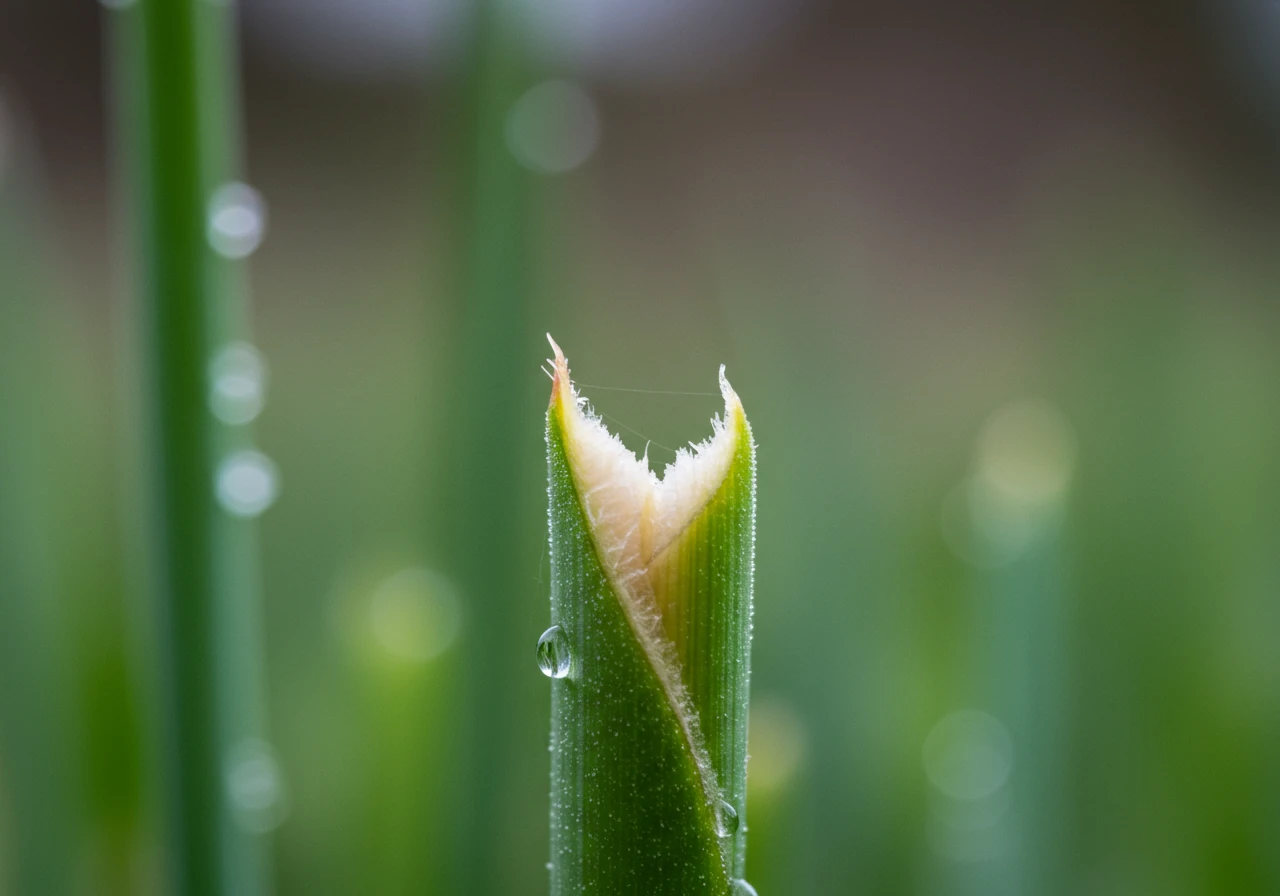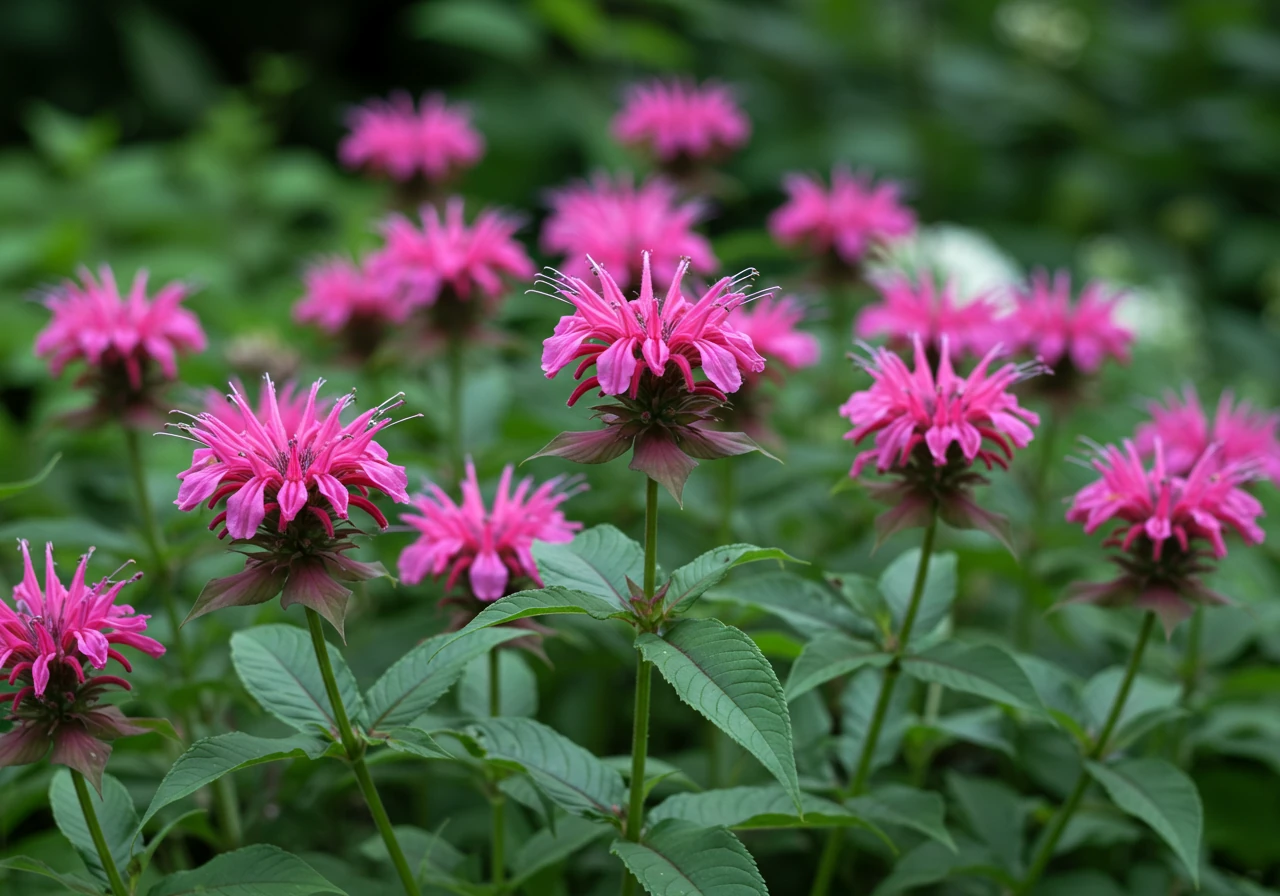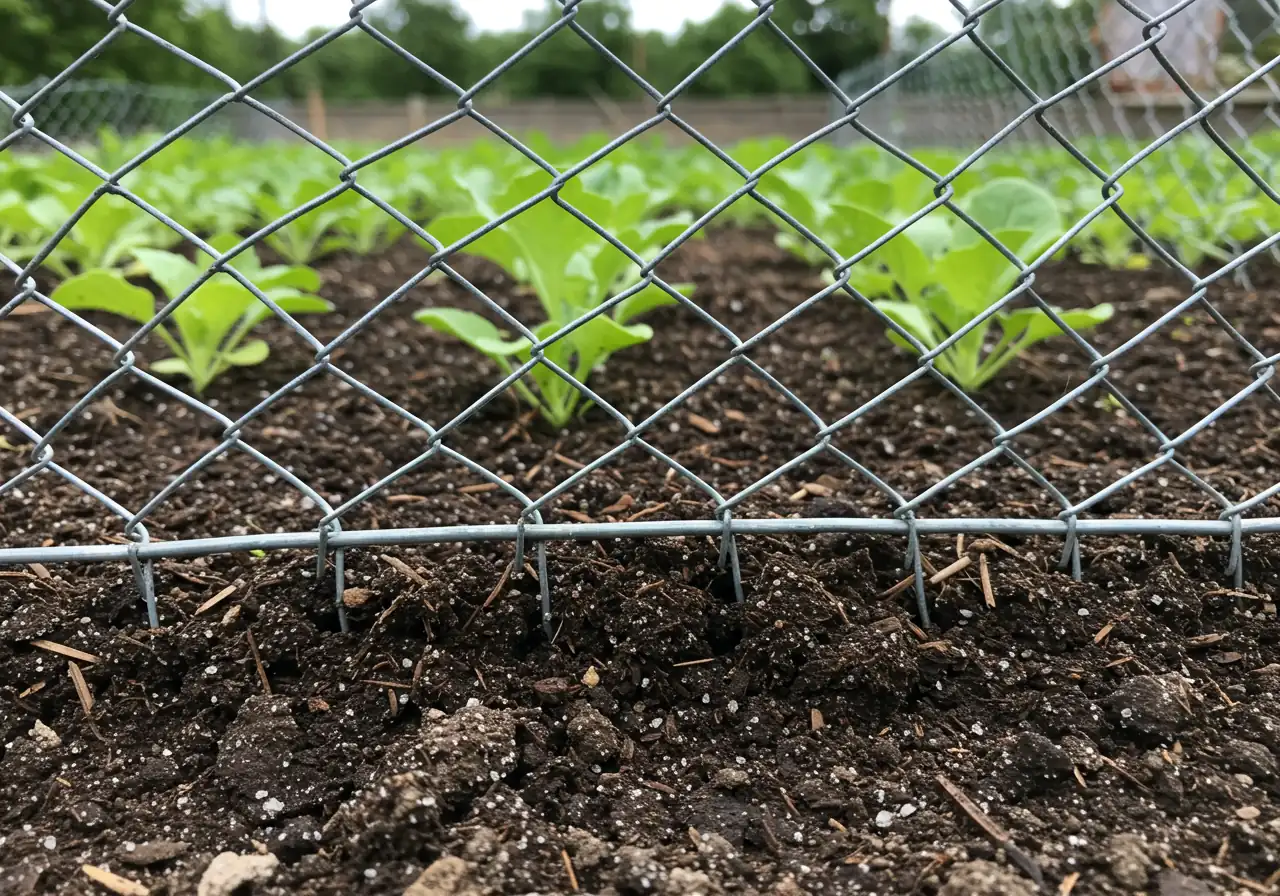Protect Embrun Gardens: Spring Rabbit-Resistant Choices
Planning your spring garden? Let us help create a beautiful, resilient space. Request a Quote Today
Quick Guide to Rabbit-Proofing Your Embrun Garden:
- Identify the Signs: Look for clean, 45-degree cuts on stems and small, pea-sized droppings.
- Choose Resistant Plants: Select perennials, annuals, bulbs, and shrubs with strong scents, fuzzy textures, or toxicity (e.g., Daffodils, Peonies, Bee Balm, Marigolds, Boxwood).
- Use Physical Barriers: Install 2ft+ high wire mesh fencing, buried 6 inches deep, around vulnerable areas.
- Apply Repellents: Use taste/scent repellents regularly, especially on susceptible plants (follow label instructions).
- Modify Habitat: Remove hiding spots like brush piles, tall weeds, and debris near gardens. Consider professional property clean up.
Introduction: Hoppy Spring, Unhappy Gardeners? Keeping Embrun Beautiful
Hoppy Spring, Embrun! Isn't it wonderful to see the last of the snow melt away? As gardeners across the Ottawa area, from Greely to our own neighbourhoods, eagerly grab our tools, there's often one furry frustration: rabbits! They might look cute hopping across the lawn, but they can turn a promising spring garden into a sad-looking snack bar overnight. Finding your newly planted perennials or tender vegetable shoots nibbled down is enough to make any gardener groan. You've planned your beautiful landscaping, maybe dreaming of vibrant flower beds, only to face these persistent nibblers. But don't despair! You *can* have a gorgeous garden without constantly battling the bunnies. This article is your friendly guide to outsmarting them. We'll share simple strategies and highlight fantastic rabbit-resistant plants that thrive in our climate, helping you keep your corner of Embrun beautiful all season long.
Know Thy Nibbler: Understanding Rabbit Habits in the Ottawa Valley
Okay, let's get acquainted with our fluffy-tailed, garden-raiding neighbours here in the Ottawa Valley: the Eastern Cottontail rabbit. Think of them as the ultimate opportunistic snackers of the landscaping world. They aren't picky eaters, especially when hungry, but they definitely have favourites.

So, what do these critters crave? Young, tender growth is like a five-star meal for them. Think fresh spring shoots, soft stems, vegetable seedlings, and the bark of young trees and shrubs, especially during winter when other food is scarce. Residents in areas like Barrhaven or Greely know this all too well! You can usually tell if a rabbit's been dining in your garden by the damage signature: neat, clean, 45-degree angle cuts on stems and twigs. Deer, on the other hand, tend to rip and tear, leaving ragged edges. Rabbits also leave behind small, pea-sized droppings, often scattered generously.
Why *your* yard? Rabbits are creatures of habit and safety. They love areas with easy access to food (*your* prize-winning petunias) and nearby cover like dense shrubs, hedges, tall grass, or even woodpiles. Anything that offers a quick escape from predators makes your yard more attractive. Protecting your plants is key, but sometimes the structures we use can inadvertently provide shelter. For instance, while effective for plants, knowing about Metcalfe wind protection summer microclimate garden tips might require considering if those windbreaks also create rabbit havens. Similarly, understanding Osgoode garden microclimates winter protection is vital, as the very covers protecting your plants can offer cozy winter refuge for bunnies. They are particularly active at dawn and dusk, so early morning garden inspections often reveal the previous night's nibbling adventures. Winter damage is also common; taking care of Osgoode fall tree pruning before winter can sometimes reduce accessible food sources and shelter near ground level. Effective Kars winter garden protection microclimate tips often involve physical barriers, which we'll discuss later. If managing potential rabbit habitats feels overwhelming, exploring professional landscaping and yard maintenance services can help maintain a less inviting environment for these persistent herbivores.
Decoding 'Rabbit-Resistant': Setting Realistic Expectations
Alright, let's talk about that magic phrase: "rabbit-resistant." When you see a plant tag with this label at the garden center, what does it *really* mean? Think of it less like a bunny-proof forcefield and more like the gardening equivalent of serving broccoli to a picky toddler. They *might* eat it if they're really hungry, but they’d much rather have something else!
Essentially, "rabbit-resistant" plants have certain characteristics that make them less appealing to our fluffy friends. These include:
- Strong Scents: Many herbs (like mint, sage, lavender) and plants with aromatic foliage release smells that rabbits find offensive. Good for us, bad for bunnies!
- Unpleasant Textures: Plants with fuzzy, coarse, or spiky leaves and stems (think Lamb's Ear or plants with thorns) often get passed over. It’s like trying to eat sandpaper – not fun.
- Toxicity: Some plants contain compounds that are mildly toxic or taste bitter, deterring rabbits after a test nibble. (Always be mindful of toxicity if you have pets or children).
However – and this is the important part – no plant is truly rabbit-proof. Here in the Ottawa area, especially during lean times like late winter or early spring before lush growth appears everywhere, a hungry rabbit is less discerning. Young, tender shoots of *any* plant, even supposedly resistant ones, can be tempting. A desperate bunny in Nepean might sample things it usually avoids. Plant health also matters; stressed plants can be more vulnerable.
Keeping your garden less inviting overall can help bolster your plant choices. Regular maintenance, like the services offered by an Osgoode yard clean-up service, removes potential hiding spots. Similarly, a thorough Ottawa garden clean up service keeps beds tidy and less tempting. Even practices like proper mulching and edging can create barriers, though sometimes mulch just makes digging easier for them! If you're putting in a new lawn, be aware that rabbits might nibble the tender edges, even with professional sod installation. For comprehensive help managing your landscape to minimize rabbit appeal, exploring various landscaping and yard maintenance services is always a good option.
So, while choosing "rabbit-resistant" varieties is a smart strategy, view it as one tool in your gardening toolkit, not a guarantee. Combine it with other deterrents for the best results!
Perennial Powerhouses
These plants return year after year and are generally less tasty to rabbits. Combine with other strategies for best results.
- Peonies (Tough foliage)
- Bleeding Hearts (Mildly toxic)
- Bee Balm (Strong scent)
- Coneflower (Coarse texture)
- Catmint (Fuzzy, fragrant leaves)
- Yarrow (Aromatic foliage)
Annual All-Stars
Great for quick color! These annuals often deter rabbits with scent or texture.
- Marigolds (Pungent scent)
- Snapdragons (Bitter taste)
- Ageratum (Fuzzy texture)
- Salvia (Unpleasant taste/scent)
- Zinnias (Mature plants have coarse leaves)
Bulbs & Shrubs
Build a foundation with less appealing structural plants.
- Bulbs: Daffodils (Toxic), Alliums (Onion scent) are excellent choices. Avoid Tulips & Crocuses (rabbit candy!).
- Shrubs: Boxwood, Spirea, Potentilla, Barberry (thorny) are often ignored. Be cautious with Euonymus, young Hydrangeas, and winter Cedars.
Perennial Powerhouses: Long-Lasting Rabbit Resistance for Embrun Gardens

Alright Embrun gardeners, let's talk long-term strategy! While fencing and repellents have their place, wouldn't it be nice to plant something beautiful that those pesky rabbits *mostly* ignore year after year? That's where rabbit-resistant perennials come in – these are the dependable workhorses of the landscaping world, returning each spring to grace your garden beds without becoming bunny buffets. Planting perennials is an investment in long-lasting beauty, and choosing wisely can save you heaps of heartache (and nibbled stems!).
Remember our chat about "rabbit-resistant" meaning "less tasty," not "completely invincible"? Keep that in mind. But by selecting plants with strong scents, fuzzy or tough leaves, or slightly toxic properties, you can significantly reduce rabbit damage. These plants just don't appeal to their palate, especially when easier snacks are nearby. Think of it as stocking your garden pantry with things bunnies wrinkle their noses at!
Here are a few reliable perennial choices that thrive in our Ottawa Valley climate (Zone 5a/b) and tend to get left alone by rabbits:
- Peonies (Paeonia): These classic beauties offer huge, gorgeous blooms in late spring. Their thick stems and robust foliage aren't appealing to rabbits. Plus, they live for decades! Just give them sun and well-drained soil.
- Bleeding Hearts (Dicentra spectabilis): With their charming, heart-shaped flowers, these shade-lovers add grace to woodland gardens. Rabbits typically avoid their foliage due to its mild toxicity.
- Bee Balm (Monarda): A fantastic native plant! Its aromatic leaves (part of the mint family) have a strong scent that rabbits dislike, but bees and hummingbirds adore. Comes in vibrant reds, pinks, and purples. Needs sun and good air circulation.
- Coneflower (Echinacea): Another native favourite! These cheerful, daisy-like flowers are tough and drought-tolerant once established. Their somewhat coarse leaves and sturdy stems make them less tempting. Great for sunny spots.
- Catmint (Nepeta): Not just for cats! This drought-tolerant perennial has fuzzy, fragrant leaves (thanks, mint family again!) that rabbits find unpleasant. Its lavender-blue flowers bloom for ages. It’s a fantastic, low-maintenance border plant.
- Yarrow (Achillea): Features flat-topped flower clusters and feathery, aromatic foliage. It’s tough, drought-tolerant, loves sun, and rabbits generally turn their noses up at its scent and texture.
Quick Reference: Why Rabbits Resist Them
- Peonies: Tough, thick foliage.
- Bleeding Hearts: Mildly toxic foliage.
- Bee Balm: Strong, minty scent.
- Coneflower: Coarse leaves and stems.
- Catmint: Fuzzy, fragrant leaves.
- Yarrow: Aromatic, feathery foliage.
Planting for Success:
Give these perennials the best start. Ensure your garden beds are well-prepared – maybe after a good spring tidy-up. If your yard needs a more significant overhaul before planting, considering a professional touch like a Marionville property cleanup service can make a world of difference, clearing out debris where rabbits might hide. Once planted, applying a layer of organic material can be beneficial; our guide to mulching and edging offers tips on doing this effectively, which also helps retain moisture and suppress weeds around your new plants.
Maintaining healthy plants makes them less vulnerable overall. Regular weeding and appropriate watering are key. For homeowners juggling busy schedules, especially across wider areas like Ottawa or nearby Russell, engaging a reliable city garden maintenance service ensures your perennials get the consistent care they need to thrive and stay robust against pests. Even specific tasks, like end-of-season tidying provided by a Marionville garden clean up service, help keep the garden less inviting for overwintering critters. By choosing tough, rabbit-resistant perennials and giving them good care, you can create a beautiful, *lasting* Embrun garden that the bunnies are more likely to hop right past.
Relative Rabbit Resistance (General Guide)
Note: Resistance can vary based on rabbit hunger levels and local conditions.
Annual All-Stars: Quick Color Without the Nibbles
Okay, perennials are fantastic for long-term structure, but sometimes you just crave that *instant gratification* – a big splash of colour to brighten things up *right now*. That's where annuals shine! They complete their entire life cycle in one growing season, giving you vibrant blooms all summer long. They're perfect for filling gaps between perennials, jazzing up borders, and creating stunning container displays that really pop. But wait, won't the rabbits just see this as a fresh salad bar appearing overnight? Not necessarily!
While many popular annuals are indeed bunny candy (we're looking at you, petunias and pansies!), several gorgeous options tend to get the cold shoulder from our furry friends in the Ottawa area. Choosing the right annuals can save you the springtime bunny blues, especially in neighbourhoods from Embrun to Nepean where yards might be bustling with wildlife.
Before you even think about planting those colourful gems, ensuring your garden beds are prepped makes a big difference. A thorough general property clean up removes potential rabbit hiding spots and messy winter debris, setting the stage for planting success. If tackling a bigger spring preparation feels daunting, particularly if you're in specific locales needing focused attention, calling in experts like a Metcalf property cleanup service can get your space beautifully ready in no time, allowing you to focus on the fun part – planting!
Here are some annual all-stars known for being less palatable to rabbits, thanks mainly to their scent or texture:
- Marigolds (Tagetes): It's all about that pungent scent! Rabbits generally find the strong aroma offensive. Plus, they offer cheerful yellows, oranges, and reds all season long and are super easy to grow.
- Snapdragons (Antirrhinum): These beauties add wonderful height and come in a stunning rainbow of colours. Their slightly bitter taste and unique flower shape seem to deter browsing bunnies.
- Ageratum (Ageratum houstonianum): Also known as Floss Flower, its fuzzy texture isn't pleasant for rabbits to nibble. It provides lovely clouds of soft blue, pink, or white flowers, perfect for edging beds.
- Salvia (Salvia splendens / Salvia farinacea): Both the vibrant red bedding salvia and the taller blue/purple types (like Victoria Blue) often get ignored due to their slightly minty or just plain unpleasant-tasting foliage. Hummingbirds love them, though!
- Zinnias (Zinnia elegans - some varieties): While *very* young, tender zinnia seedlings *can* be tempting, mature plants with their slightly rough, hairy leaves are often left alone. Stick to the taller, coarser varieties for better resistance. They adore sun and offer bold colours.
Quick Resistance Recap:
- Marigolds: Strong, pungent scent
- Snapdragons: Bitter taste and texture
- Ageratum: Fuzzy, unpleasant texture
- Salvia: Unpleasant taste or scent (often minty family traits)
- Zinnias (Mature): Coarse, slightly hairy texture
These annuals are *perfect* for container gardening! Planting in pots, window boxes, or raised beds not only adds fantastic visual interest but can also physically lift vulnerable young plants out of easy rabbit reach. This is especially helpful on decks, patios, or in smaller urban lots. Choosing the right containers and complementary mulches is part of the creative process – explore different options when doing your landscape material selection to find what works best for your style and practical needs. Using these less-tasty annuals can truly transform your outdoor areas with minimal fuss. Check out some inspiring landscaping transformations to see how quick colour can make a huge impact, even with rabbits hopping about! By choosing wisely, you *can* enjoy a summer full of brilliant blooms without constantly worrying about providing a bunny buffet.
Bulbs, Shrubs & Structure: Foundational Resistance

Okay, let's talk about the architectural backbone of your garden: bulbs and shrubs! These aren't just pretty faces; they provide the essential structure, height, and year-round interest that makes your landscaping truly shine. Think of them as the sturdy framework upon which your seasonal colours hang. But oh, the heartbreak when rabbits decide your carefully chosen structural plants are their personal all-you-can-eat buffet! Building a resilient garden, especially in areas like Embrun or Manotick where nature is right at our doorstep, starts with choosing foundational plants that bunnies tend to bypass.
First up: Bulbs! Popping up in spring, they're often the first casualties.
- Rabbit Magnets: Tulips and Crocuses. Sorry folks, these are like five-star chocolates to rabbits. They will often dig them up or munch the emerging leaves and flowers right down.
- Resistant Heroes: Daffodils (Narcissus) and Alliums (Ornamental Onions). Daffodils contain lycorine, a compound that's toxic and distasteful to most critters, including rabbits. Alliums have that characteristic oniony/garlic scent that rabbits find repulsive. Planting these *en masse* in the fall gives you glorious, worry-free spring colour.
Next, let's look at shrubs – the real workhorses providing substance and shape.
- Vulnerable Choices: Euonymus (especially the low-growing types), young Hydrangeas, and sometimes even Cedars (particularly in winter) can suffer significant rabbit damage. Their tender bark and stems are easy targets.
- Sturdier Options: Boxwood (Buxus - classic hedging, tough leaves), Spirea (many varieties, generally ignored), Potentilla (tough, long-blooming), and Barberry (Berberis - thorny deterrent, but check for non-invasive types!). These often have textures, smells, or thorns that make them unappealing.
These bulbs and shrubs are crucial for creating layers and defining spaces in your Ottawa garden. Daffodils can ring a Spirea, Alliums can pop up through groundcover near a Boxwood hedge. Planning involves thinking seasonally – bulbs in fall for spring bloom, most shrubs best planted in spring or fall. Before undertaking major shrub planting or replacing damaged ones, getting the site ready is key. Sometimes, this requires more than just digging; clearing out old roots or debris might feel like a job needing a dependable city property cleanup service to ensure a clean slate.
Choosing resistant varieties is a smart move, but remember, gardening always involves a bit of unpredictability – something reflected even in standard service details like our terms and conditions. As a local company passionate about beautiful, thriving landscapes, as you can learn about us and our approach here, we encourage smart plant selection. If you're wondering which specific rabbit-resistant shrubs would be perfect for *your* unique yard conditions and aesthetic goals, please don't hesitate to reach out and ask our team. Building that foundational resistance from the ground up makes gardening much more enjoyable!
Seasonal Rabbit Defense Timeline
Late Winter / Early Spring
Rabbits are hungry! Protect emerging bulbs (except daffodils/alliums) and young shrub bark. Apply repellents. Check fence integrity after winter.
Spring Planting
Choose resistant annuals/perennials. Fence new vegetable plots *before* planting. Protect tender seedlings with temporary cages if needed. Ensure good soil preparation for strong growth.
Summer Maintenance
Keep grass/weeds trimmed near gardens. Reapply repellents after rain. Monitor for damage, especially on young plants. Consider ongoing garden maintenance services.
Fall Cleanup & Prep
Remove dead plant matter & debris (potential winter shelter). Plant resistant bulbs like daffodils/alliums. Wrap trunks of young trees/shrubs for winter protection. A thorough fall cleanup helps.
Winter Watch
Damage often occurs to woody plants. Ensure trunk wraps are secure. Maintain fences. Limit potential shelter near vulnerable plants.
Beyond the Plant List: An Integrated Approach to Rabbit Defense
Okay, so you've diligently chosen plants labelled "rabbit-resistant," hoping your garden won't become the local bunny buffet. That's a great start! But as many gardeners in the Ottawa area know, from Manotick to right here in Embrun, those determined nibblers sometimes require a multi-pronged defense strategy. Simply relying on plant selection alone can feel like bringing a salad fork to a fencing match. For truly effective rabbit defense, we need to think *beyond* the plant list and adopt an integrated approach. Think of it as creating layers of discouragement for those fluffy garden invaders!

Here are some non-plant strategies to add to your rabbit-proofing toolkit:
- Fencing: The Fort Knox Approach
This is often the most reliable, albeit sometimes less aesthetically pleasing, method. For rabbits, you don't need a giant wall, just smart barrier:
- Material: Use galvanized wire mesh like chicken wire (1-inch holes or smaller) or hardware cloth (even smaller holes). Plastic netting is usually too flimsy.
- Height: Aim for at least 2 feet (60 cm) above ground. Rabbits aren't great climbers, but they can hop!
- Depth: Crucially, bury the bottom edge at least 6 inches deep, or bend it outwards into an L-shape along the ground (secured with landscape staples) to prevent digging underneath.
- Application: You can fence individual garden beds, protect vulnerable young shrubs with wire cylinders, or fence the entire perimeter if feasible. It's a bit of work, but it provides solid protection for your prized landscaping efforts.
- Repellents: Making Things Stinky (to a Rabbit!)
Repellents work by making plants taste or smell bad to rabbits.
- Pros: Relatively easy to apply, can target specific plants. Eco-friendly options exist (like sprays made with hot pepper wax, garlic, or predator scents – handle those carefully!).
- Cons: Need frequent reapplication, especially after rain or heavy dew. Can become costly over time. Effectiveness can vary, and some rabbits might ignore them if they're hungry enough. Always follow label directions carefully!
- Scare Tactics: Boo! (For a Little While)
Think motion-activated sprinklers, shiny reflective tape or old CDs dangling from strings, or even strategically placed owl decoys (move them regularly!).
- Pros: Can offer temporary deterrence, sprinklers also water the garden! Your supervised dog enjoying the yard can also be a great deterrent.
- Cons: Rabbits are adaptable and often get used to static scare devices quickly. Effectiveness usually diminishes over time. That surprise sprinkler might startle you more than the bunnies eventually!
- Habitat Modification: Removing the Welcome Mat
This is perhaps the most crucial non-plant strategy. Rabbits love shelter near their food source. Make your yard less inviting:
- Clean Up: Remove brush piles, stacks of wood, construction debris, and low-hanging branches where rabbits can hide. Keep tall grass and weeds trimmed back, especially around garden beds. Regular tidiness is key, which is where a professional Ottawa yard cleanup service can be a huge help, especially after a long winter melts away.
- Seal Access: Block off openings under decks, sheds, and porches with sturdy wire mesh (buried slightly, just like fencing!).
- Ongoing Care: Don't let things get overgrown during the season. Consistent garden maintenance keeps those tempting hiding spots minimized. For broader property maintenance across the region, you might consider a reliable city yard cleanup service to manage potential hiding spots before they become permanent rabbit residences.
Combining these strategies – perhaps low fencing around the vegetable patch, a repellent on a favourite young shrub, and keeping the yard tidy – creates a much more robust defense than relying on any single method. Implementing these takes effort, but the payoff is a beautiful garden you can truly enjoy without constantly seeing red... or nibbled stems! We appreciate you taking the time to explore these rabbit defense tips – a big thank you for reading and happy gardening! For more insights and services, check out Clean Yards on Google.
Embrun Gardener's Rabbit-Proofing Cheat Sheet
Those adorable bunnies turning your Embrun garden into a buffet? Fight back with these quick tips for Ottawa gardeners:
- Fortress Your Flora: Install chicken wire fencing (at least 2 ft high) around vulnerable plants or beds, making sure to bury it 6 inches deep so they can't dig under! It's often the most effective physical barrier.
- Choose Wisely: Opt for plants rabbits tend to dislike – think strong scents (like Bee Balm, Catmint) or fuzzy/tough textures (like Lamb's Ear, Coneflower). Giving these beauties a strong start with good soil preparation helps them establish quickly.
- Clean Up Crew: Rabbits *love* hiding spots near their food source! Remove brush piles, keep weeds down near beds, and maintain tidy edges. Even consistent lawn care reduces nearby cover. Feeling overwhelmed by spring mess? A professional city garden clean up service can swiftly handle debris removal. (We take care with your info; you can review our privacy policy anytime.)
External Resources for Ottawa Gardeners:
FAQs: Your Embrun & Ottawa Rabbit Questions Answered
You're not imagining it! Rabbit populations naturally cycle based on factors like weather and predator numbers. Mild winters or years with fewer foxes and coyotes can lead to a bunny boom across Ottawa neighbourhoods. So yes, some years you'll definitely see more nibblers hopping through your Manotick or Barrhaven yard than others. Keep those defences ready!
Yes, but you need serious protection! Tender lettuce, beans, and carrot tops are rabbit favourites. Your best bets are raised garden beds (at least 2 feet high) or securely fencing your vegetable patch with 1-inch wire mesh, buried 6 inches deep. Even then, watch out for determined bunnies! Clearing the area well before building beds can help; consider a service like a Metcalf yard cleanup service to remove potential hiding spots nearby.
Always read and follow the label directions very carefully! Some repellents use natural ingredients like hot pepper wax or dried blood, while others are chemical-based. Many are not recommended for use directly on edible plants. Check if the product specifies it's safe for vegetables and follow waiting periods before harvest. Keep kids and pets away during and immediately after application as directed.
Rabbits cause the most headaches during two main times. First is early spring, when their favourite wild foods are scarce, and your tender new shoots and emerging bulbs look like a gourmet meal. Second is winter, when they resort to chewing bark and twigs on young trees and shrubs. Keeping your yard tidy, especially removing winter debris with an Ottawa property cleanup service, reduces shelter and makes your plants less tempting during these critical times.
Absolutely! You don't necessarily need to fence your entire property line. Fencing individual garden beds, encircling vulnerable young shrubs with wire cages, or protecting a specific vegetable plot is very manageable, even in smaller suburban yards. Making sure the area is clear of clutter first makes installation easier; a focused cleanup, maybe from a provider like the Marionville yard cleanup service, can prep the space nicely. Check our estimate feedback for project ideas.
Indirectly, maybe a tiny bit, but don't count on it as a primary defense! Healthy soil grows stronger, more vigorous plants. These *might* recover faster from minor nibbling or *potentially* be slightly less appealing than stressed plants. However, a hungry rabbit won't be deterred by healthy soil alone. Focus on soil health for overall plant success, especially before a new garden install, but use fencing or repellents for actual rabbit protection. Also consider services like Metcalf garden clean up or general city garden clean up for prep work.
Conclusion: Enjoy Your Beautiful (and Less Chewed!) Embrun Garden
Well, there you have it! Battling bunnies in your Embrun garden doesn't mean you have to surrender your beautiful landscaping dreams. It’s all about gardening smarter, not harder (well, maybe a *little* harder if you're digging fence lines!). By choosing plants that rabbits tend to ignore – like those fragrant perennials or fuzzy-leaved annuals – and combining that with smart defenses like fencing, repellents, and keeping your yard tidy, you really can discourage those fluffy nibblers. Remember, removing their favourite hiding spots near your prized garden beds is half the battle! Creating a stunning outdoor space in the Ottawa area, even with wildlife neighbours, is totally achievable.
Feeling inspired but need a hand putting these plans into action? Let us help you design and maintain a rabbit-resistant oasis! Contact Clean Yards today for a personalized landscaping consultation and discover how our services can keep your Embrun garden gorgeous. Plus, check out our full range of yard maintenance services online to see how we can support your gardening success all season long. Happy gardening, and here's to fewer chewed plants!

